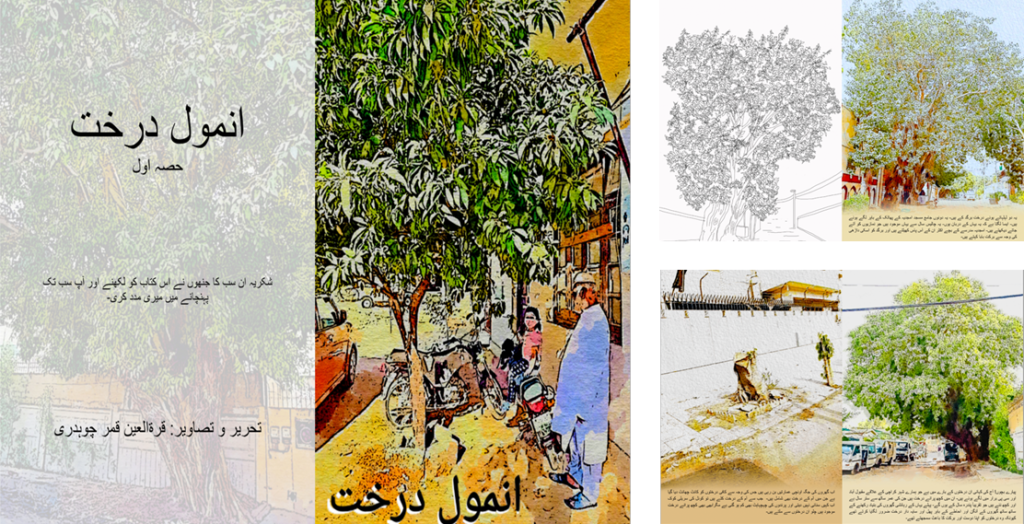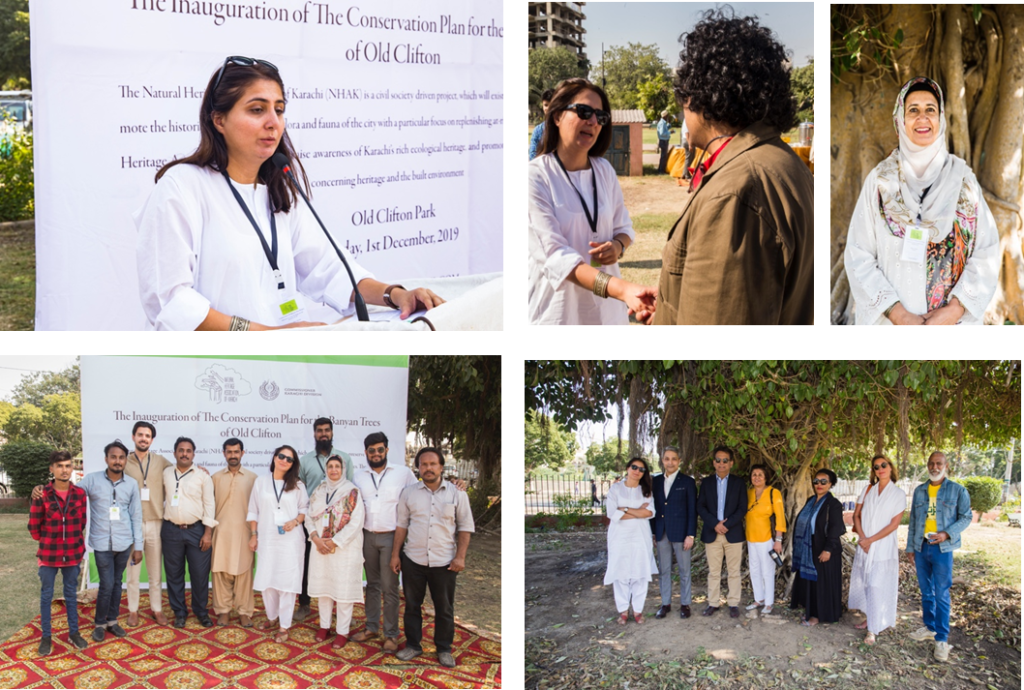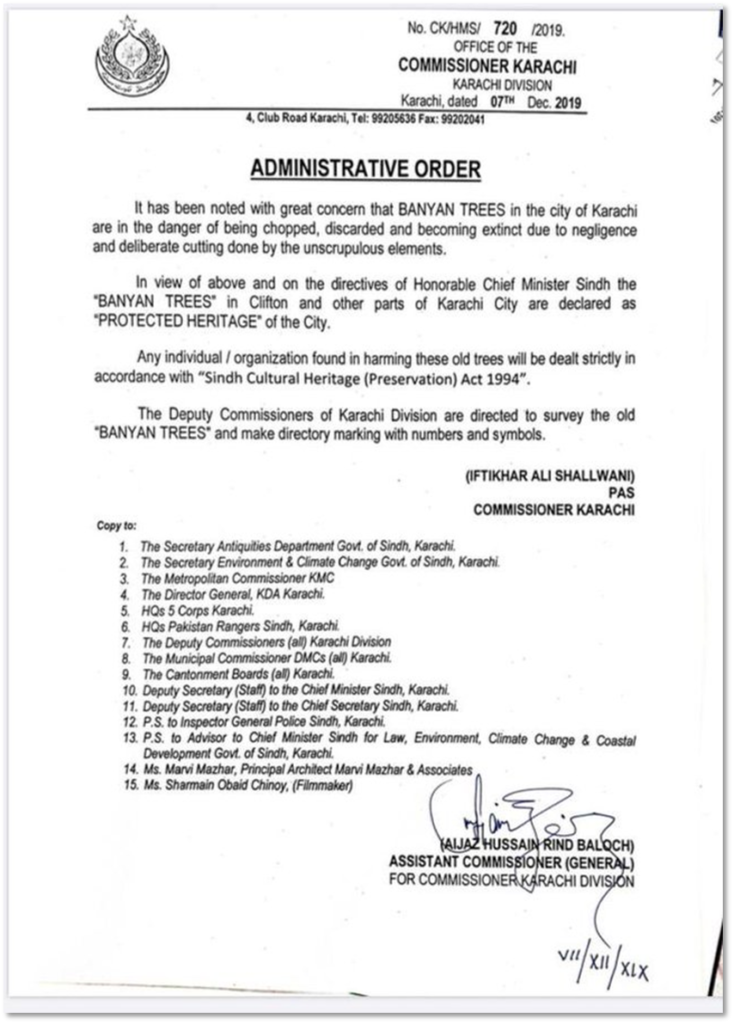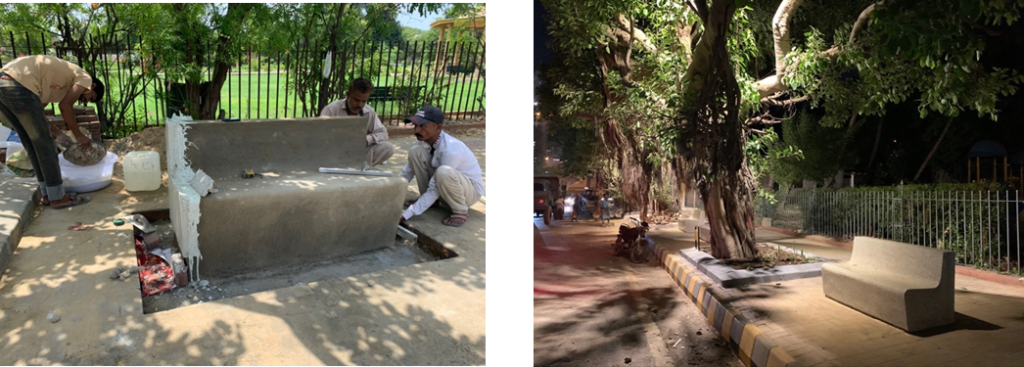The Beginning (2015)
The Banyan Tree Project was initiated in 2015 after the demolition of unofficial heritage Banyan Trees to pave the way for the development of the Old Clifton underpass.
The Catalyst (2019)
Following the subsequent removal of several Banyan Trees across Karachi’s Shahrah-e-Iran road in September 2019, Architect and Activist Marvi Mazhar assembled a committee of concerned citizens comprised of Senator and Adviser to CM Sindh Murtaza Wahab, Environmental Activist Tofiq Pasha Mooraj, Film Director Sharmeen Obaid Chinoy, FM91 CEO Sara Tahir Khan, and Architects Arif Belgaumi, Shahid Khan, and Mariyam Iftikhar. Together, they campaigned tirelessly to preserve Old Clifton’s sacred, centuries-old Banyan trees – the so-called ‘grandparents’ of Old Clifton, as fondly called by conservationists.
The “Banyan Tree” movement gains traction
While the cause gained traction, they had yet to garner the support of the broader public. An invitation extended to Marvi Mazhar by the Lyceum school served as the first instance of an institution with its own Banyan population interested in the protection of surrounding Banyan Trees. Her September 28, 2019 address regarding their plight concurrently served to illuminate the student body on the gravity of the Banyan rehabilitation project and assured the protection of the Lyceum’s Banyan trees.
The event successfully sparked discourse among the youth, leading young author Qurutulain Choudry to author “Anmol Darakht,” an interactive book for children.

Mazhar, along with lawyer Umed Ali and former PCCC and MMA intern Uzayr Agha, published an article in Samaa on October 14, 2019, chronicling the past and possible future of the Banyan Trees of Old Clifton. They highlighted the unfortunate reality that Banyan Trees in Karachi are often felled for the paltry sums brought in by their extensive branches.
They further described how the grandeur of Banyans is merely a mask that has invited neglect in recent years – In contrast to what many may believe, Banyan Trees require extensive care, and even the “tiniest of termites” threaten to plague them.
Following a month of unwavering effort to garner the attention of government officials, Mazhar secured an official meeting at the office of Karachi Commissioner Iftikhar Ali Shallwani on November 14, 2019. With former intern Uzayr Agha and prominent architect Shahid Khan in attendance, Mazhar pitched the preservation of Old Clifton’s ‘heritage’ Banyans. They promptly secured administrative authorization to proceed with architect Mohammed Mithai’s mapping of the 68 Banyan trees along Shahrah-e-Iran and Hatim Alvi Road leading to Karachi’s Old Clifton Park.
The “Banyan Tree Project” becomes a national movement
After recognizing the success of their activism, the concerned citizens who first shed light on the Banyan Tree Project formally organized their efforts to form the National Heritage Association of Karachi (NHAK), a crucial step in the fight for green-activism. This formal organization was symbolised by a logo designed by Kiran Ahmad in the subsequent weeks of November 2019.

In celebration of the inauguration of the Banyan Tree Project on December 1, 2019, with consulate representatives and high-profile school, university, and upscale hospital administrative officials in attendance, Mazhar drafted a letter sent through Barrister Murtaza Wahab to the Karachi Commissioner on December 4, 2019.
The inauguration of the Banyan Tree Project not only brought civil society members together, but also solidified conservation efforts through the honorary appointment of Karachi Commissioner Iftikhar Shallwani as chair of the project.

Less than a week later, on December 7, 2019, the Karachi Commissioner approved the motion to declare the 68 Banyan Trees along Old Clifton’s Shahrah-e-Iran and Hatim Alvi Roads as “protected heritage” with an official administrative order.

The Banyan Tree Project, though initially established to preserve Old Clifton’s green-heritage, transcends a single focal point. With a significant number of Banyan trees located on pavements along the consulate-concentrated Shahrah-e-Iran road, the Banyan Trees have come to symbolize a place of convergence and congregation in a city
So deprived of non-gated public space
Marvi Mazhar
Road to Recovery
In order to deter loitering by those seeking shade under the canopies of the nearby Banyan Trees, consulates began the process of felling. With the support of the Deputy Commissioner South, Irshad Ali Sodhar, Mazhar countered the felling by placing terrazzo benches under the trees beginning in February 2020.
The benches, designed by Architect Arif Belgaumi, established the spaces around the trees as focal congregation points, encouraging discourse and the appreciation of natural beauty. Mazhar successfully conveyed the importance of spatial advocacy by strategically placing the benches facing towards the swaying branches of peripheral Banyans. The minimalistic design of the terrazzo benches reflects the fragility of day-to-day life in contemporary society. While wood can be stolen and resold, terrazzo offers a medium that can be optimized for comfort and aerodynamic purposes. Each terrazzo bench features a plaque, including the sprawling, aptly named “Rebel Tree,” dedicated as a touching tribute to late activist Sabeen Mahmud.
Through the temporary insertion of pillars in the tree’s periphery to provide support, the tree is now growing once more and sprouting new leaves. We hope this success will inspire citizens to recognize that trees with weak root systems still have the capacity to flourish – with a little extra support, they can be given a new lease of life.

The beautification of the Banyan Tree sites encourages passers-by to pause in the midst of their day-to-day activities to make time for the serenity of the Banyan landscape. With a nod to her work for spatial advocacy, Mazhar ascertained that no space was left neglected. Conceptualizing and overseeing the rehabilitation of footpaths, Mazhar assured that minimalistic structures were erected to accommodate edges for the Banyan trees as opposed to former concrete-choking pavements that restricted the growth of their roots. The final product is a welcome diversion from other footpaths in the city characterized by encroachment and contestation. Stretching 8 feet in width and emphasizing the perfect balance of decorative accents, the footpaths fulfil Mazhar’s vision of an elevated pedestrian walkway.

The “Setback” (2020)
Unable to anchor its roots in the wet soil amid the 2020 monsoon season, a Banyan Tree was uprooted outside the Sindh High Court. Despite initial instruction for the tree to be cut, Mazhar and lawyer Alizeh Bashir advocated to save the Banyan.


